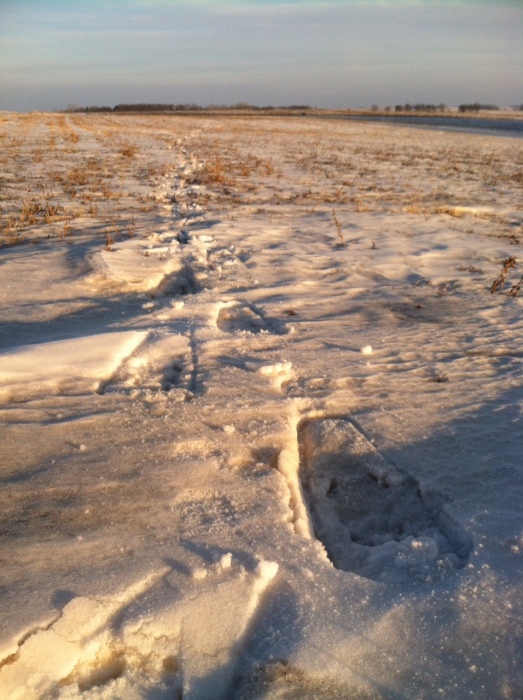This is part two of a blog relating the process by which Strata, Big Stone County Commissioners, and the City of Ortonville forced through an unwanted aggregate quarry project in Ortonville Township and along the headwaters of the Minnesota River. For part one, click here.
Despite clear opposition to the quarry project from the township and a sizable portion of the county as a whole, Big Stone County Commissioners voted unanimously to approve Strata’s Conditional Use Permit at their May 1, 2012 meeting. However, due to the township’s interim ordinance (which suspended the county’s jurisdictional authority), the project still couldn’t move forward.
Re-entering the scene, former County Planning and Zoning Chair and Ortonville EDA Director Vicki Oakes began working with proposed quarry site landowner Gayle Hedge, along with Strata and the City of Ortonville to devise a new plan to push the project through.
Oakes also waged a campaign of righteousness and ridicule against quarry opponents, Ortonville Township supervisors, citizens, and those “outsiders” who helped them on her blog, Quarry Talk. The blog has since been removed from the web, but her August 5, 2012 post entitled, “New Township Zoning–The Future!” is quoted and discussed here.
Hedge subdivided among family members the 500-or-so acre proposed quarry site, which abutted the city boundary, into 6 separate very interestingly-shaped parcels, each with a small portion abutting the city, and each of the new owners petitioned the city for annexation.
Annexations by ordinance of 120 acres per owner per year of property that abuts the city boundary are allowed by the state of Minnesota. Anything more than that requires the city to negotiate with the township in whose borders the land falls. Due to the clearly-expressed sentiments of township residents, bringing the township to the negotiating table didn’t seem a likely way to make the project happen, hence the subdivision.
And, while an interim ordinance can protect a township from development pushed by the county, it cannot protect them from a land-grab by an adjoining city. Once land is annexed into the city, it is no longer within the township’s jurisdiction, even if township-controlled land still surrounds the annexed parcel(s) almost entirely.
The city had recently amended their zoning rules to immediately place annexed land into the same land use category as the land it abuts–an obvious attempt to circumvent a later public hearing addressing a change of zoning on annexed parcels specifically for the Strata project.
After all, it doesn’t necessarily make sense to do zoning-by-abutment if, for instance, you’re annexing land abutting an industrial area that is destined for a golf course or housing development, or if you’re annexing land that abuts two different zoning districts. But, clearly the goal here wasn’t to make sense, it was to pave the smoothest way for Strata’s quarry project to move forward.
The rules at that October 15, 2012 City Planning & Zoning Commission hearing were as follows: 1) We’re here to discuss the rule change, and 2) We’re not here to discuss the quarry project. Those asking why the rule was being changed were referred to Rule #2. More discussion of that hearing is available here, but needless to say, the rule change passed easily.
On October 25th, the Ortonville Township Board of Supervisors hosted their own listening session and public information meeting at the New Life Baptist Church in Ortonville. The meeting was designed for members of the public to learn more about the proposed project, to ask questions, and to have better understanding of the process, as well as the township’s stance.
The meeting was attended by those on both sides of the issue as well as those who didn’t have a “side,” though at one point then-mayoral candidate Steve Berkner hijacked the mike and attempted to make himself palatable to all city voters in the room by describing to what lengths the city would go to prove that the project was safe and how it would not affect property values of the nearby residents (not many lengths, it turned out).
Then came the November 5th, 2012 public hearing on the city’s proposed annexation of the subdivided parcel–the date of which neatly coincided with the date provided in Strata’s step-by-step guide to the annexation by ordinance process, provided to then-Mayor David Dinnel and the Ortonville City Council at Vicki Oakes’ request–documents available here.
The public input process at this hearing was severely curtailed by city planning and zoning commissioners, who must’ve thought the “see no quarry, hear no quarry, speak no quarry” rule at the October 15th zoning rules change hearing made fast-track approval of Strata’s project a lot less stressful. YouTube video of that hearing, and of the public’s verbal gymnastics to avoid saying “quarry” in their testimony, is available here.
Shortly thereafter, the Ortonville City Council had their first and second readings of the annexation ordinances, and passed them all after the second reading. Everything was zipping right along according to Strata’s timeline when the township filed its objections to the annexations by ordinance (ABOs) with the State Municipal Boundaries Adjustment Unit (MBAU).
At that point, the MBAU looked at the situation more closely, and found that Gayle Hedge was still a beneficial owner of all of the parcels (having retained rights to profit from sales of aggregate on all parcels) and 5 out of 6 of the ABOs were rejected by an administrative law judge. The city and petitioners appealed that ruling, and it ended up in district court.
****************************************************************
In the spring of this year, District 12A State Representative Andrew Falk introduced HF 1425, which would address this troubling loophole in state annexation law by imposing a moratorium of five years before subdivided parcels could be annexed by ordinance.
The bill did not interfere with the ability of local governments to use orderly annexation (the preferred method, since all parties have a voice at the table), but it was tabled in the House Government Operations Committee on May 2nd due to its arrival late in the session and strong opposition from the League of MN Cities and Coalition of Greater MN Cities, who basically claimed that the bill would create some sort of development Holocaust in the state.
I was at that hearing (and at a follow-up in St. Cloud earlier this week), and found it somewhat amusing to hear representatives from those organizations on the one hand acting very chastened about the whole situation in Ortonville and agreeing that it was a no-good-very-bad way to go about things, and promising to help figure out how to keep it from happening again, while on the other hand fighting like heck to make sure that their member cities would indeed have the opportunity to do it again now that this exciting new loophole had been discovered for annexing large tracts of land from townships without townships having any say in the matter.
Indeed, one might question the commitment of Coalition of Greater MN Cities to chastising wayward Ortonville and their spirit-of-law circumventing ways when, later this summer, they celebrated Ortonville Mayor Steve Berkner’s participation in the attempt to kill Falk’s bill with an Excellence in Service Award.  I find the quote about Berkner’s advocacy having stopped the bill from moving forward misleading at best: in fact, it was the process Berkner took part in as a council member, and then presided over as mayor that prompted this legislation in the first place, and it was the timing of the bill (late in the session) that prompted the most concern from legislators. You can hear the committee proceedings for yourself here–scroll down to Thursday, May 2nd.
I find the quote about Berkner’s advocacy having stopped the bill from moving forward misleading at best: in fact, it was the process Berkner took part in as a council member, and then presided over as mayor that prompted this legislation in the first place, and it was the timing of the bill (late in the session) that prompted the most concern from legislators. You can hear the committee proceedings for yourself here–scroll down to Thursday, May 2nd.
(The bill isn’t dead, by the way. The Government Operations Committee is still waiting to hear more substantively from the above-mentioned organizations, who are charged with negotiating with the MN Association of Townships to come up with some kind of consensus on how to close this loophole and/or address what were termed by committee members as abuses–yes, that’s right, abuses of the annexation process like that perpetrated in Ortonville.)
So, with the annexation decision of five out of the six parcels still in court (actually the parties have recently asked the judge not to rule) and potential state legislation that could remedy Ortonville Township’s plight, why would the township board do a deal for orderly annexation now?
Well, you have to go back to that 120 acres per owner per year law. You see, the City has already successfully annexed one parcel for Strata’s project–and that parcel is the core of the quarry footprint. Next year, the city can simply annex another one or two of the parcels (so long as they don’t go over the 120 acres rule–since Hedge is still deemed to be a beneficial owner of all of the parcels). In another year, another one or two parcels, and pretty soon the city and Strata have got it all anyhow.
And what does the township get in this scenario? Not a blessed thing.
On the other hand, orderly annexation, as you’ll recall, requires that all parties come to the table. And that gives the township the opportunity to get something instead of nothing.
And what of the legislation? These things move slowly, and as much as township residents might hope some remedy can be made, they are also cognizant of the oft-repeated mantra of those committee hearings: “Nothing can be done to help the situation in Ortonville now. The best we can do is to avoid similar abuses in the future.”
So, the choice for Ortonville Township is a losing one either way. They could have fought to the bitter end, which would more than likely have been bitter indeed, with nothing to show for their years of work and expense, or they could do a deal and get something. In organizing, we call that a strategic loss. It sucks; it ain’t what we wanted, but it ain’t nothing.
That is not to say there is no more role for citizen input, protest, and potentially even legal challenges from adjacent landowners, but the township board has fended this thing off as well and as long as they could. I’ve certainly seen their dedication in this nearly two years’ fight, and the idea that this is a happy resolution of all those past differences with Strata and Bill LaFond rings about as false as it comes.
There’s plenty more to this story, both in the documentation and in the stories from county residents who fought this fight. I want to give special thanks to Sally Jo Sorenson at Bluestem Prairie (and Big Stone Bolder)–many of the documents, stories, and testimony would never have been publicly available without her work.
 I found one of the clappers, and I suppose the other will eventually be unearthed as the snow subsides. With the leaves off the trees, it’s probably a blessing that those clappers flew off–the first night it really blew, I could hardly get to sleep with all the clanging on the south lawn. We’ll know better to take them down next winter.
I found one of the clappers, and I suppose the other will eventually be unearthed as the snow subsides. With the leaves off the trees, it’s probably a blessing that those clappers flew off–the first night it really blew, I could hardly get to sleep with all the clanging on the south lawn. We’ll know better to take them down next winter.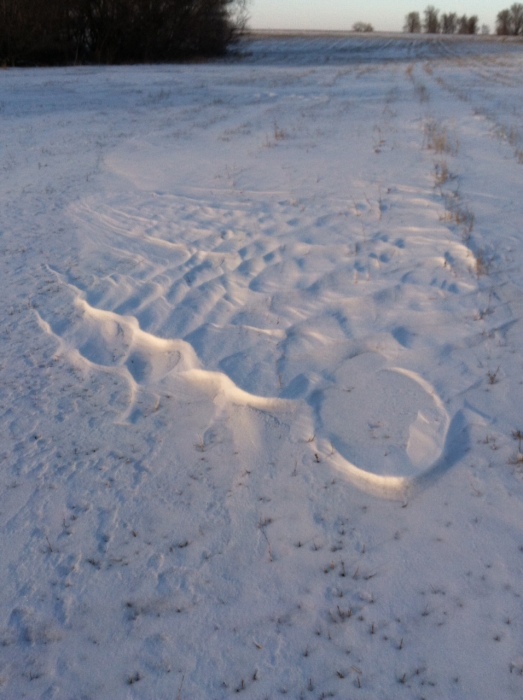 But, it’s tough slogging in regular boots–there’s no rhythm to the walking with a couple of steps easy and light, then floomph!–down into the deep stuff, then up on top of the still-hard crust that at next step whoa!–gives way underfoot. Much easier to strap on snowshoes for a proper survey of the prairie.
But, it’s tough slogging in regular boots–there’s no rhythm to the walking with a couple of steps easy and light, then floomph!–down into the deep stuff, then up on top of the still-hard crust that at next step whoa!–gives way underfoot. Much easier to strap on snowshoes for a proper survey of the prairie.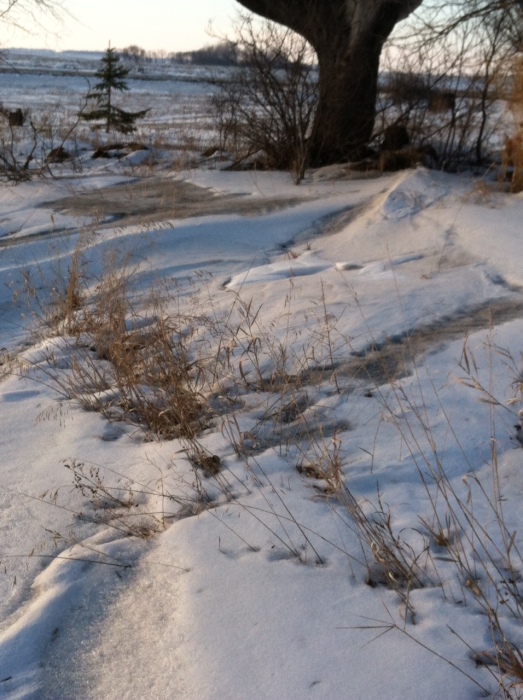 Even though we haven’t got much snow this year, we still have a decent blanket on the whole of the prairie. While much of the vegetation that’s there is still pigweed and lamb’s quarter (the local SWCD planted the prairie last summer, when it finally warmed up), those stems and roots bind the soil, catch the snow, and secure the moisture. Snow depth ranged from about an inch way up on the top south-facing slope to six or seven inches where there were taller fringes of vegetation.
Even though we haven’t got much snow this year, we still have a decent blanket on the whole of the prairie. While much of the vegetation that’s there is still pigweed and lamb’s quarter (the local SWCD planted the prairie last summer, when it finally warmed up), those stems and roots bind the soil, catch the snow, and secure the moisture. Snow depth ranged from about an inch way up on the top south-facing slope to six or seven inches where there were taller fringes of vegetation.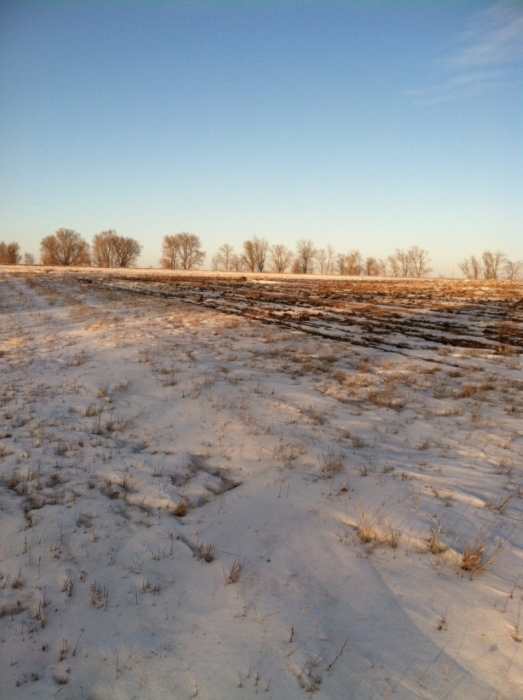 Meanwhile, we are the “beneficiaries” of our neighbors’ farming practices–in every nook and cranny of our snow-catching prairie, we’re also catching their exposed and eroding topsoil.
Meanwhile, we are the “beneficiaries” of our neighbors’ farming practices–in every nook and cranny of our snow-catching prairie, we’re also catching their exposed and eroding topsoil.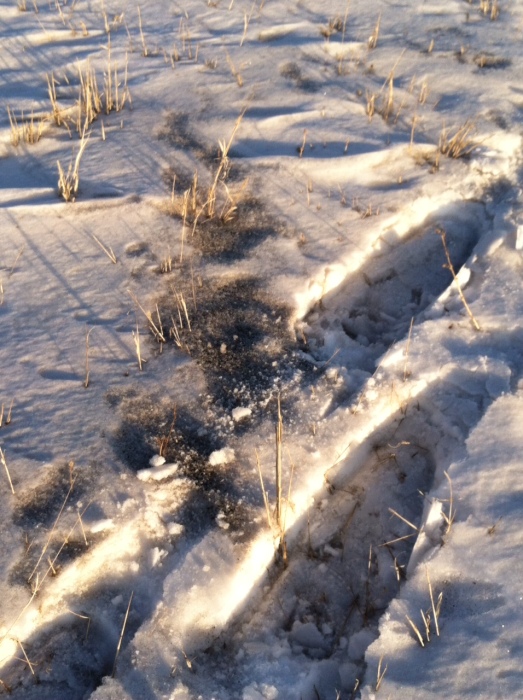 Now, I like topsoil a lot, but I’m not greedy–I’d much prefer my neighbors kept theirs–anchoring it with crop residue and even a cover crop so it doesn’t end up next door, or downstream. In case you think this is an isolated occurrence–only happening this year because we had so little snow–please feel free to read the blog of the former owner of this very farmstead from five (much snowier) years ago, appropriately titled, “Thanks for the topsoil.”
Now, I like topsoil a lot, but I’m not greedy–I’d much prefer my neighbors kept theirs–anchoring it with crop residue and even a cover crop so it doesn’t end up next door, or downstream. In case you think this is an isolated occurrence–only happening this year because we had so little snow–please feel free to read the blog of the former owner of this very farmstead from five (much snowier) years ago, appropriately titled, “Thanks for the topsoil.”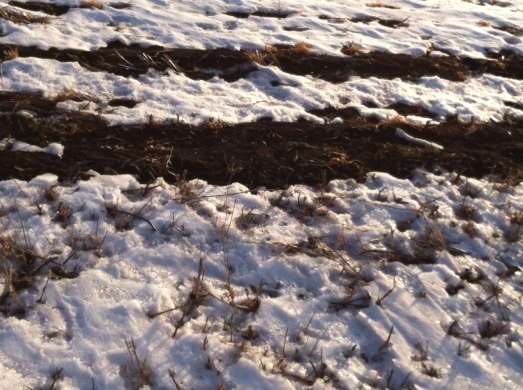 Sometimes I think back to that football halftime show where a woman’s nipple was exposed–how shocked and morally offended people were–and I wonder how much better off this country would be if we were half as up-in-arms about exposed soil as we were about an exposed nipple.
Sometimes I think back to that football halftime show where a woman’s nipple was exposed–how shocked and morally offended people were–and I wonder how much better off this country would be if we were half as up-in-arms about exposed soil as we were about an exposed nipple.
